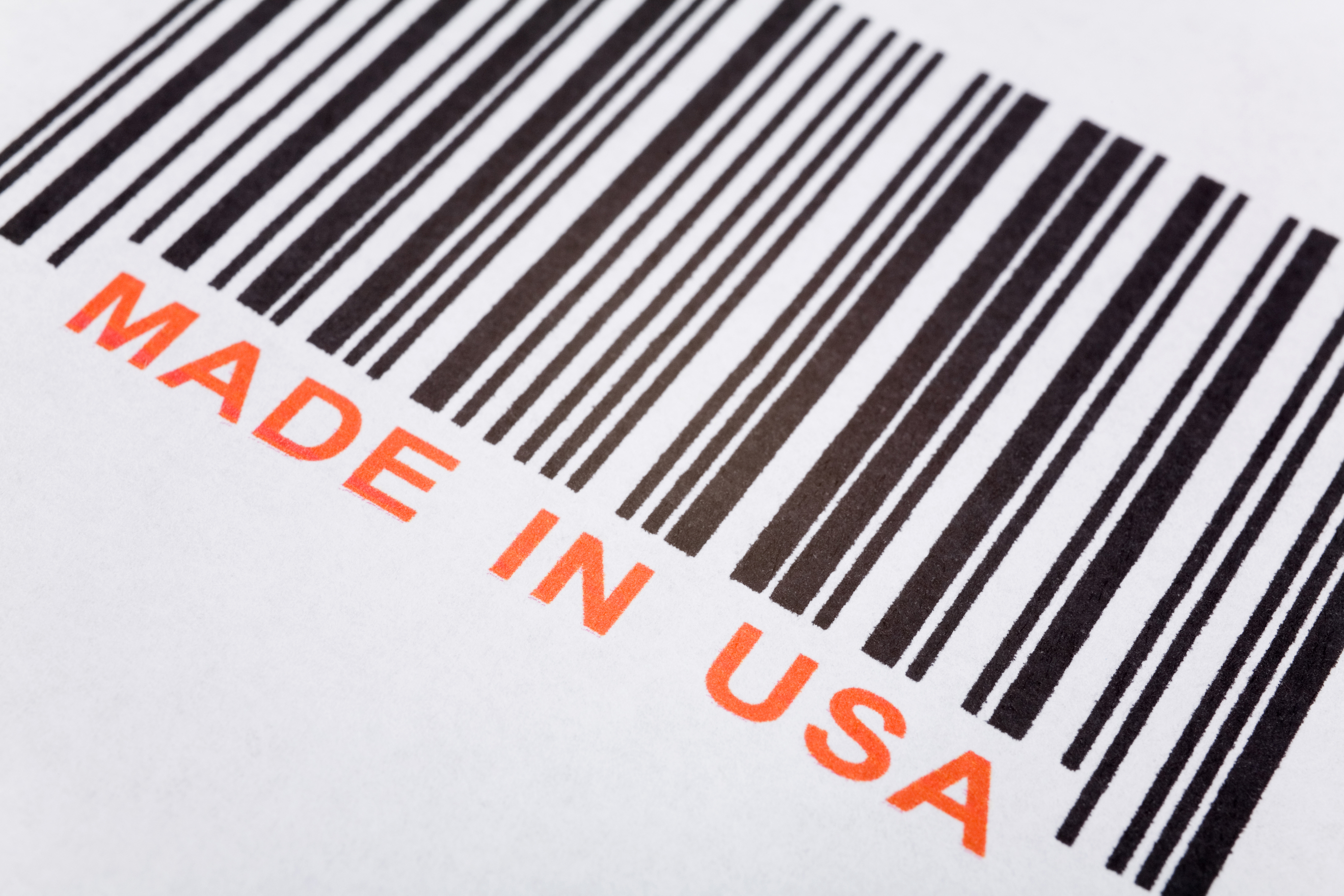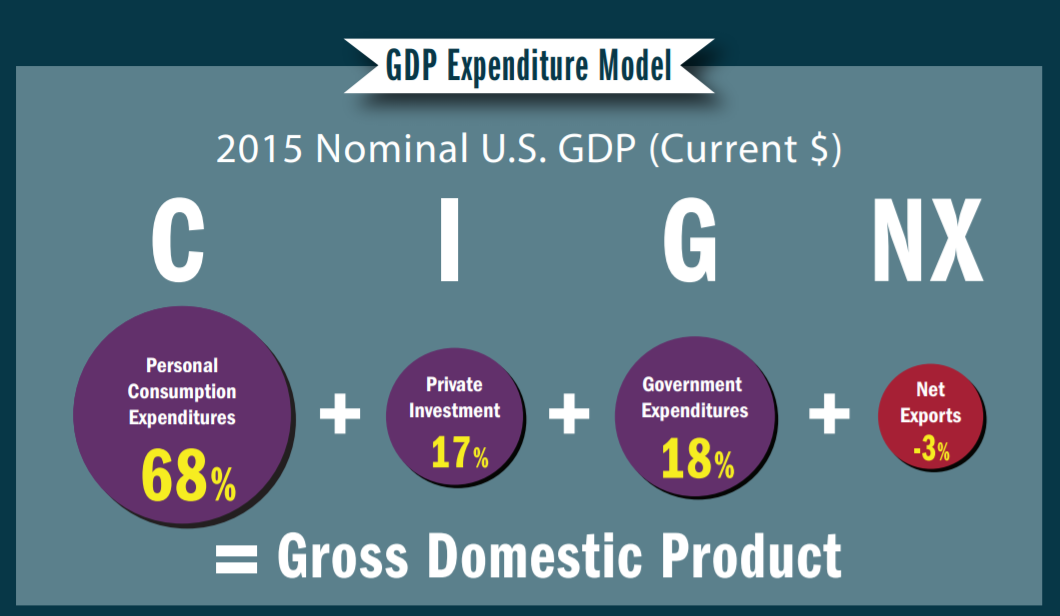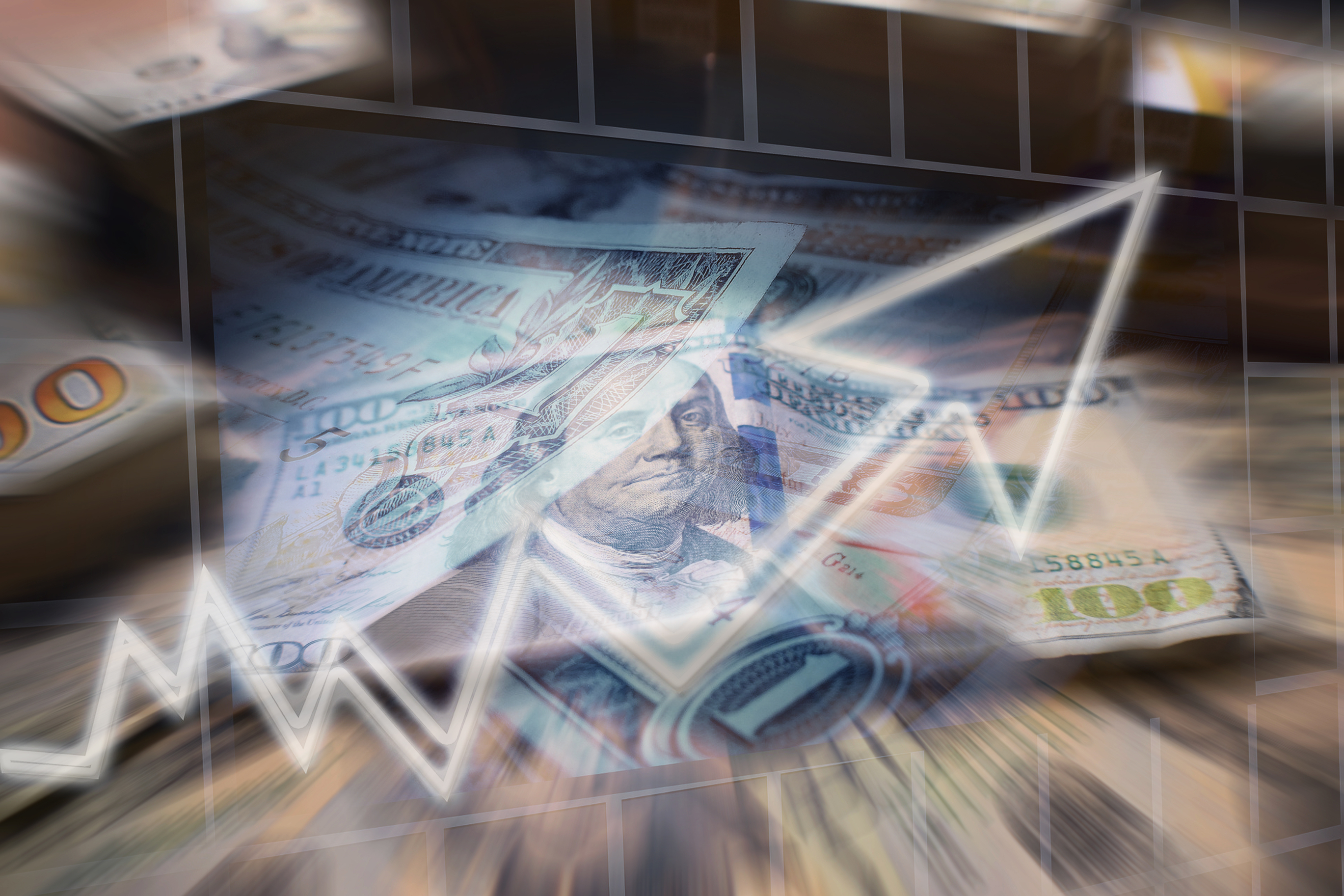Concept 25: Gross Domestic Product
Overview: Measuring how many goods and services a country produces is a massive undertaking. This lesson will help you understand how it is done and why it is never perfect.
Learn
Beginner

Gross Domestic Product (GDP) refers to the market value (expressed in dollars) of all new final goods and services produced within a country’s borders in a specific time. To fully understand GDP, it helps to start by explaining those italicized words.
GDP is measured in market value, so we’ll use US dollars for our unit of measure. For example, we might say the GDP of the United States was $19 trillion last quarter or something similar. This is important because we will only be able to count items with a dollar value, and we cannot account for the value of things like free time and happiness.
Final goods and services means we only count products as part of GDP when they reach their intended end user. We would count the sale price of a pizza, for example, assuming that the price includes the value of the dough, sauce, toppings, labor, and other inputs it took to make the pizza. Incidentally, we also only count new products. Used products like ’57 Chevys aren’t counted in current GDP.
Within a country’s borders is important because we are trying to determine what the country is producing – not what the citizens are producing. If a US citizen goes to Spain for three weeks to build a website, they contribute to Spain’s GDP during that time. This is also important because we want to count exports – things the US makes and ships elsewhere – but we need to subtract imports from our GDP because those products were not made here. You’ll learn more about this in the next section.
In short GDP, is the single broadest measure of economic activity in a country and, though flawed, provides important information about the country’s level of output.
Intermediate

Even though the definition of GDP says it measures how much is produced in a country, it is typically calculated through purchases. This is because we assume that if something was purchased – it MUST have been produced, and we now know the dollar value it contributed to the economy. So who purchases things in the US? Households, businesses, government, and foreign buyers.
Household purchases are referred to as consumption (C) in the formula. Simply put, consumption is the dollar amount households spend on final goods and services. This includes everything from haircuts to doughnuts to new shoes to pet food, etc. etc. etc. Consumption is the largest component of GDP in the US, usually around 70 percent of all spending.
Businesses do spend money on goods and services, but they do so usually to benefit their business. Therefore, their contribution to GDP is referred to as investment (I). Spending on machines, tools, factories, software and training would all count in this segment. Remember, Domino’s buying resources like pizza dough doesn’t count – because the final sale price of the pizza will count toward consumption instead.
The government (G) spends billions of dollars each year in the United States on everything from highways to schools to fighter jets to national parks and thousands of other public goods and services. Be careful, however, that you only count government spending when it purchases a good or service. Payments to individuals like Social Security or tax refunds are financial transfers that do not reflect production of a new good or service.
Exports of goods and services (X) are added to GDP. Imports of goods and services (M) are subtracted, since the materials used to produce them benefitted another country. Therefore, when calculating GDP we often combine these to into one measurement called net-exports (NX or Xn).
Therefore, the GDP of a country is calculated by the following formula:
Remember, GDP does not include
- Used goods
- Non-market transactions (changing your own oil)
- Black market/illegal transactions
- Purely financial transfers
Advanced

The calculation described in the previous section is referred to as Nominal GDP and comes with a very important flaw when measuring economic growth. Since dollar values change over time, it is not always clear whether the country is actually producing more or just charging more for the same stuff. For example, assume a very simple country produces only one good – a box of stuff. In year one they sell 10 boxes of stuff for $10 each. Their GDP is $100. The next year they sell 8 boxes of stuff for $20 each. Now their GDP is $160, but has the economy grown? No. In fact, it shrank, AND stuff is more expensive.
To correct this problem, economists adjust for inflation to get a calculation called Real GDP. Real GDP can be calculated a couple of different ways, but the main idea is to control for prices by using one set of prices over time. If we compare years 1 and 2 above, for example using year 1 prices, the Real GDP of year 1 is still $100. The real GDP of year 2, however, is only $80. Real GDP and Real GDP per capita (per person) are the most commonly used measure of economic growth.
Click a reading level below or scroll down to practice this concept.
Practice
Assess
Below are five questions about this concept. Choose the one best answer for each question and be sure to read the feedback given. Click “next question” to move on when ready.
Social Studies 2024
Describe key economic outcomes and how they are measured including economic growth using Gross Domestic Product (GDP) and real GDP; price stability using the Consumer Price Index (CPI); and full employment using the unemployment rate.














